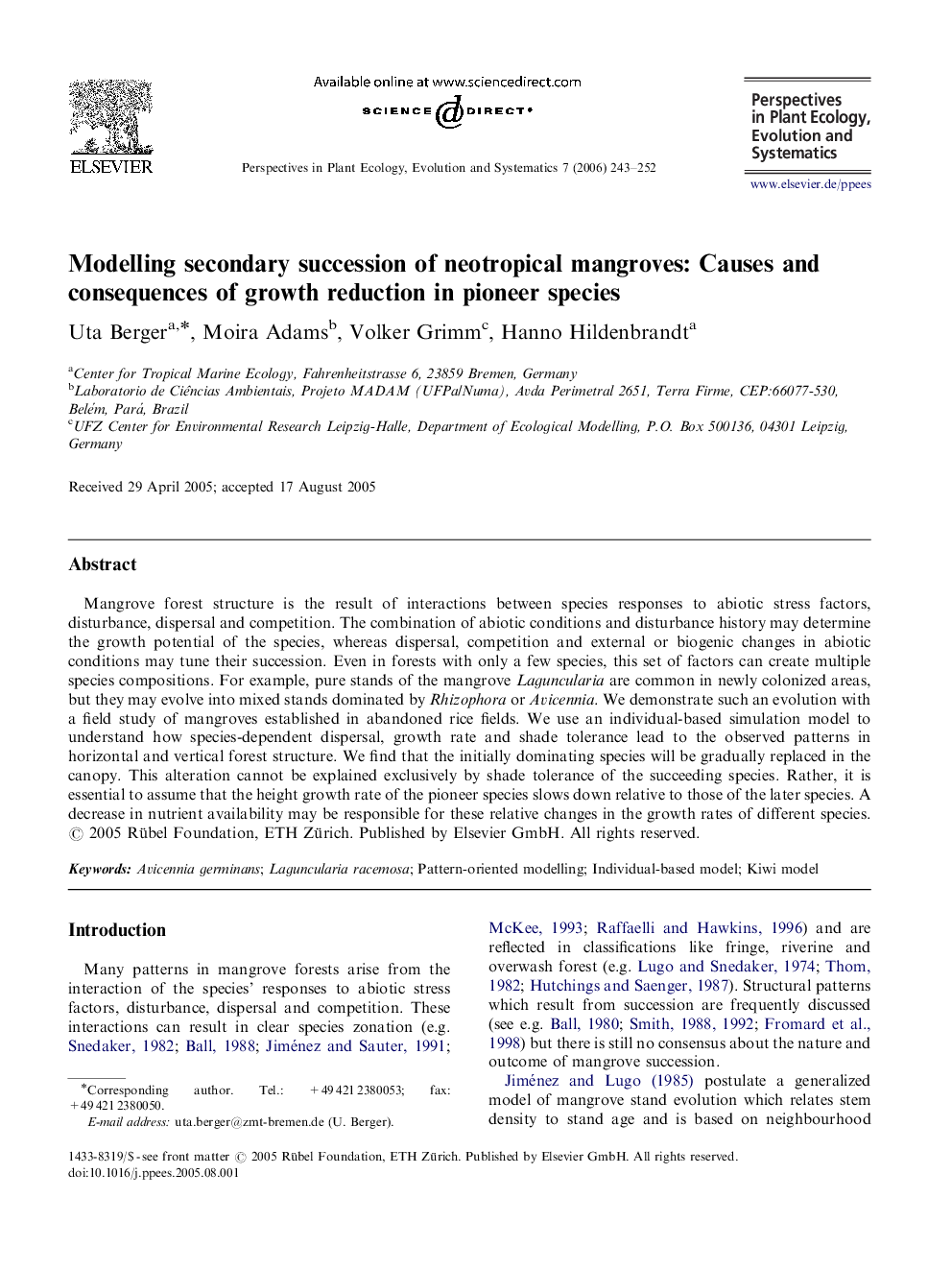| کد مقاله | کد نشریه | سال انتشار | مقاله انگلیسی | نسخه تمام متن |
|---|---|---|---|---|
| 4401207 | 1307069 | 2006 | 10 صفحه PDF | دانلود رایگان |
عنوان انگلیسی مقاله ISI
Modelling secondary succession of neotropical mangroves: Causes and consequences of growth reduction in pioneer species
دانلود مقاله + سفارش ترجمه
دانلود مقاله ISI انگلیسی
رایگان برای ایرانیان
کلمات کلیدی
موضوعات مرتبط
علوم زیستی و بیوفناوری
علوم کشاورزی و بیولوژیک
بوم شناسی، تکامل، رفتار و سامانه شناسی
پیش نمایش صفحه اول مقاله

چکیده انگلیسی
Mangrove forest structure is the result of interactions between species responses to abiotic stress factors, disturbance, dispersal and competition. The combination of abiotic conditions and disturbance history may determine the growth potential of the species, whereas dispersal, competition and external or biogenic changes in abiotic conditions may tune their succession. Even in forests with only a few species, this set of factors can create multiple species compositions. For example, pure stands of the mangrove Laguncularia are common in newly colonized areas, but they may evolve into mixed stands dominated by Rhizophora or Avicennia. We demonstrate such an evolution with a field study of mangroves established in abandoned rice fields. We use an individual-based simulation model to understand how species-dependent dispersal, growth rate and shade tolerance lead to the observed patterns in horizontal and vertical forest structure. We find that the initially dominating species will be gradually replaced in the canopy. This alteration cannot be explained exclusively by shade tolerance of the succeeding species. Rather, it is essential to assume that the height growth rate of the pioneer species slows down relative to those of the later species. A decrease in nutrient availability may be responsible for these relative changes in the growth rates of different species.
ناشر
Database: Elsevier - ScienceDirect (ساینس دایرکت)
Journal: Perspectives in Plant Ecology, Evolution and Systematics - Volume 7, Issue 4, 16 January 2006, Pages 243-252
Journal: Perspectives in Plant Ecology, Evolution and Systematics - Volume 7, Issue 4, 16 January 2006, Pages 243-252
نویسندگان
Uta Berger, Moira Adams, Volker Grimm, Hanno Hildenbrandt,